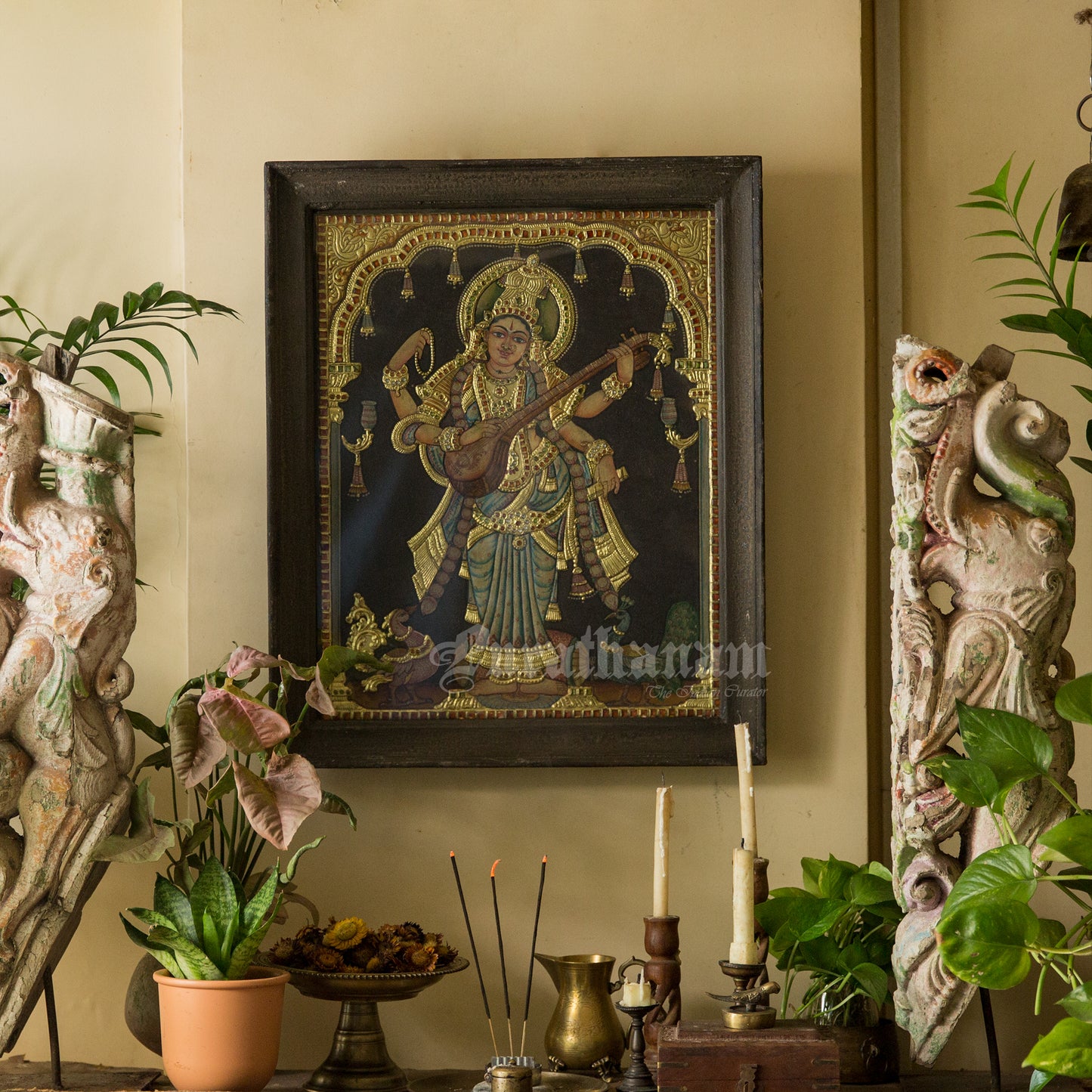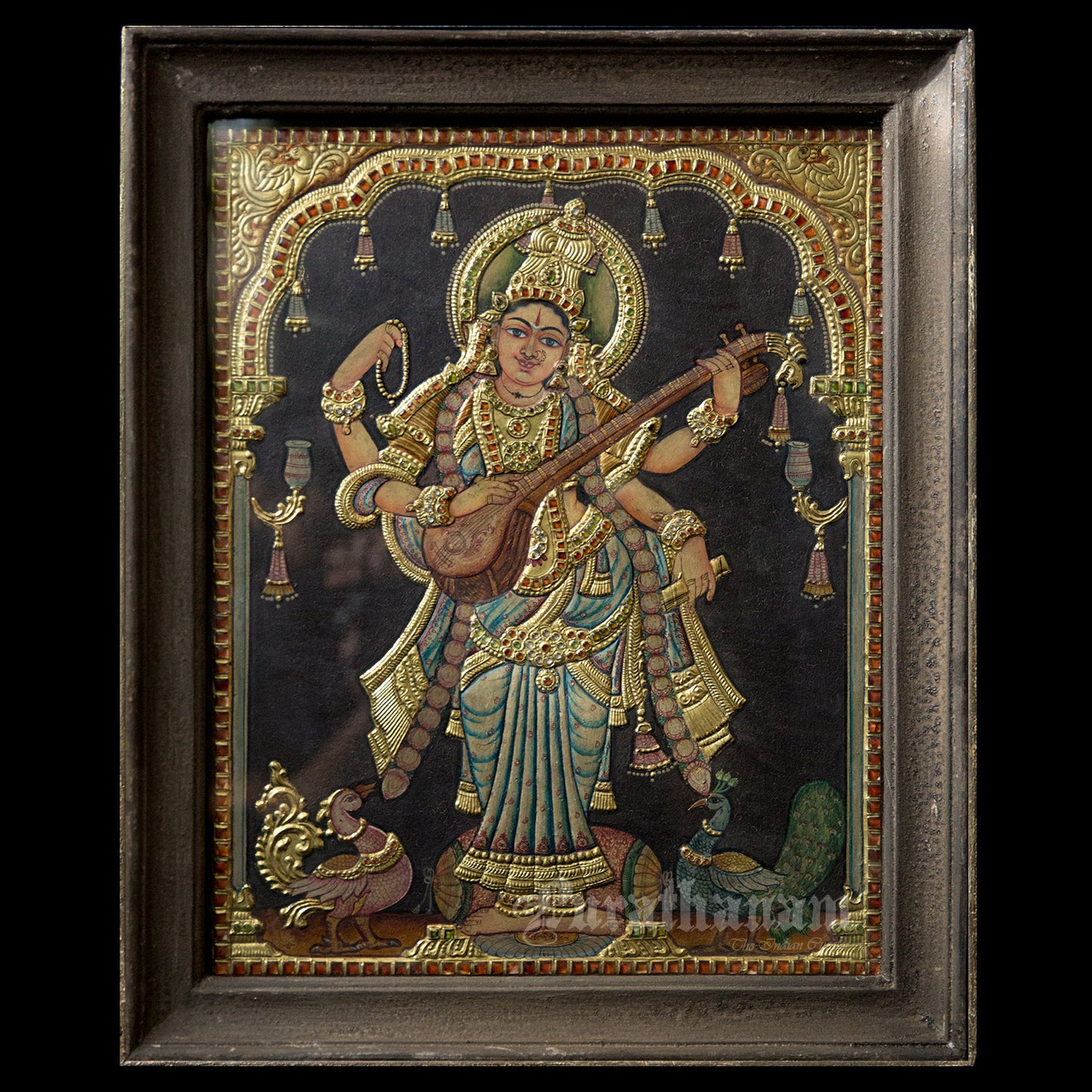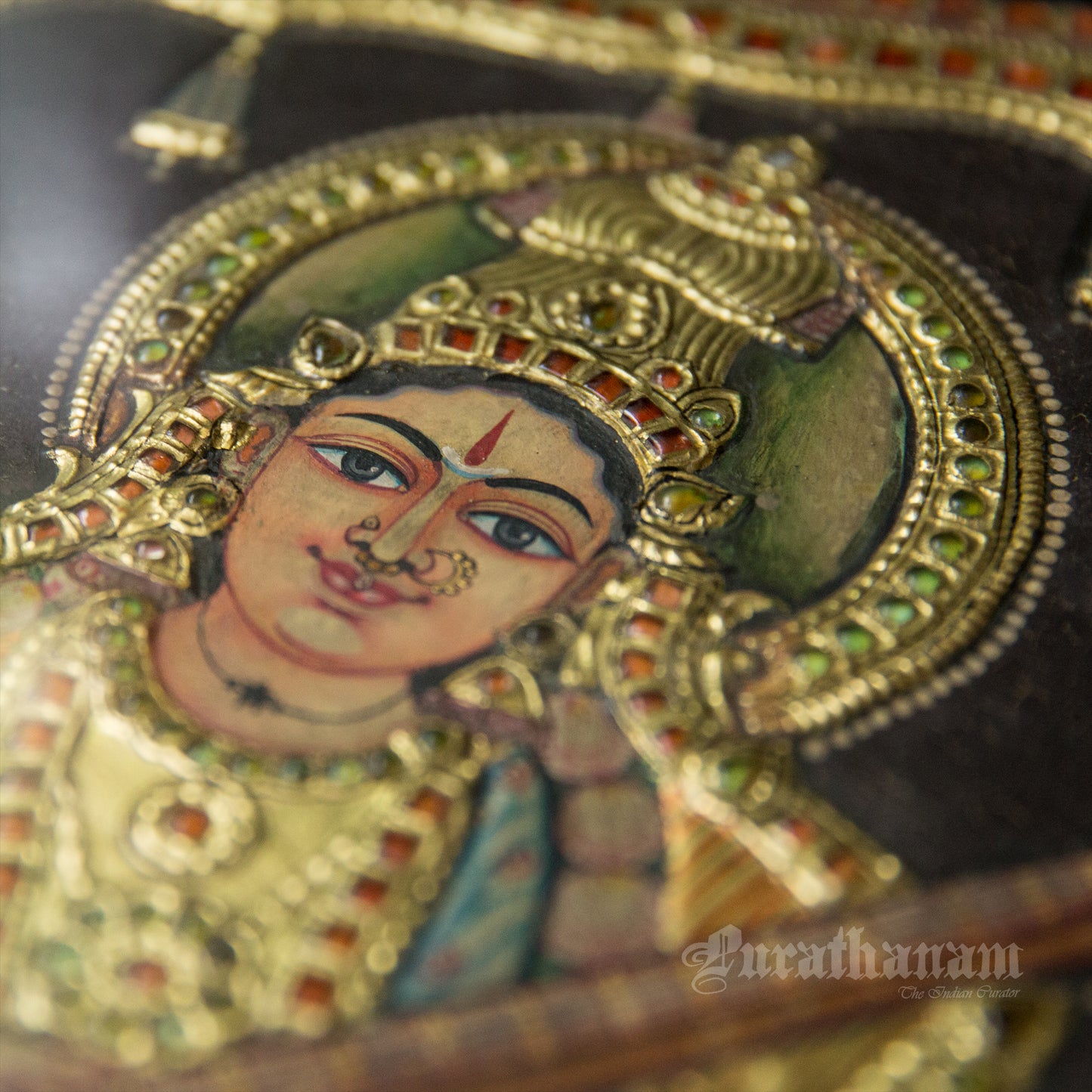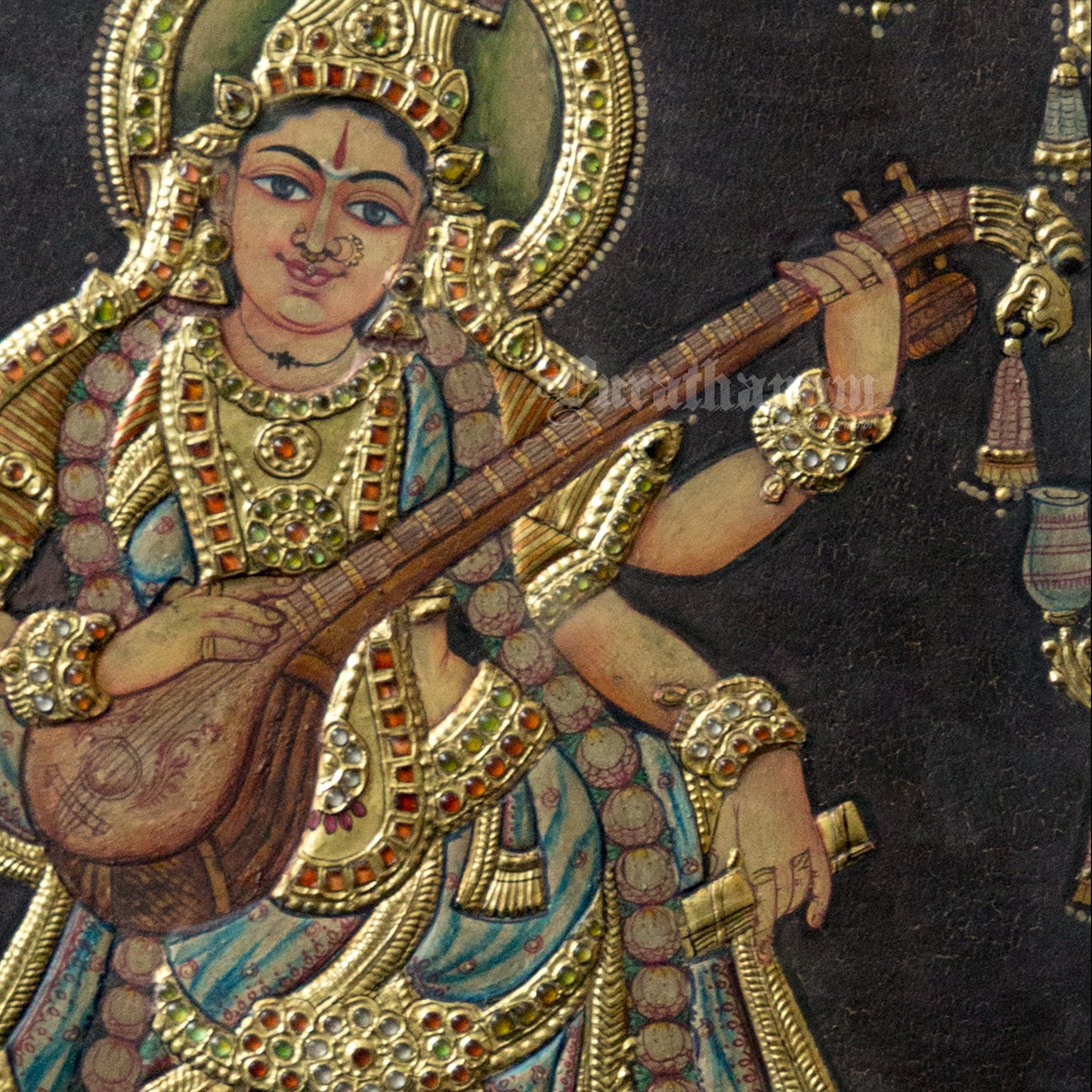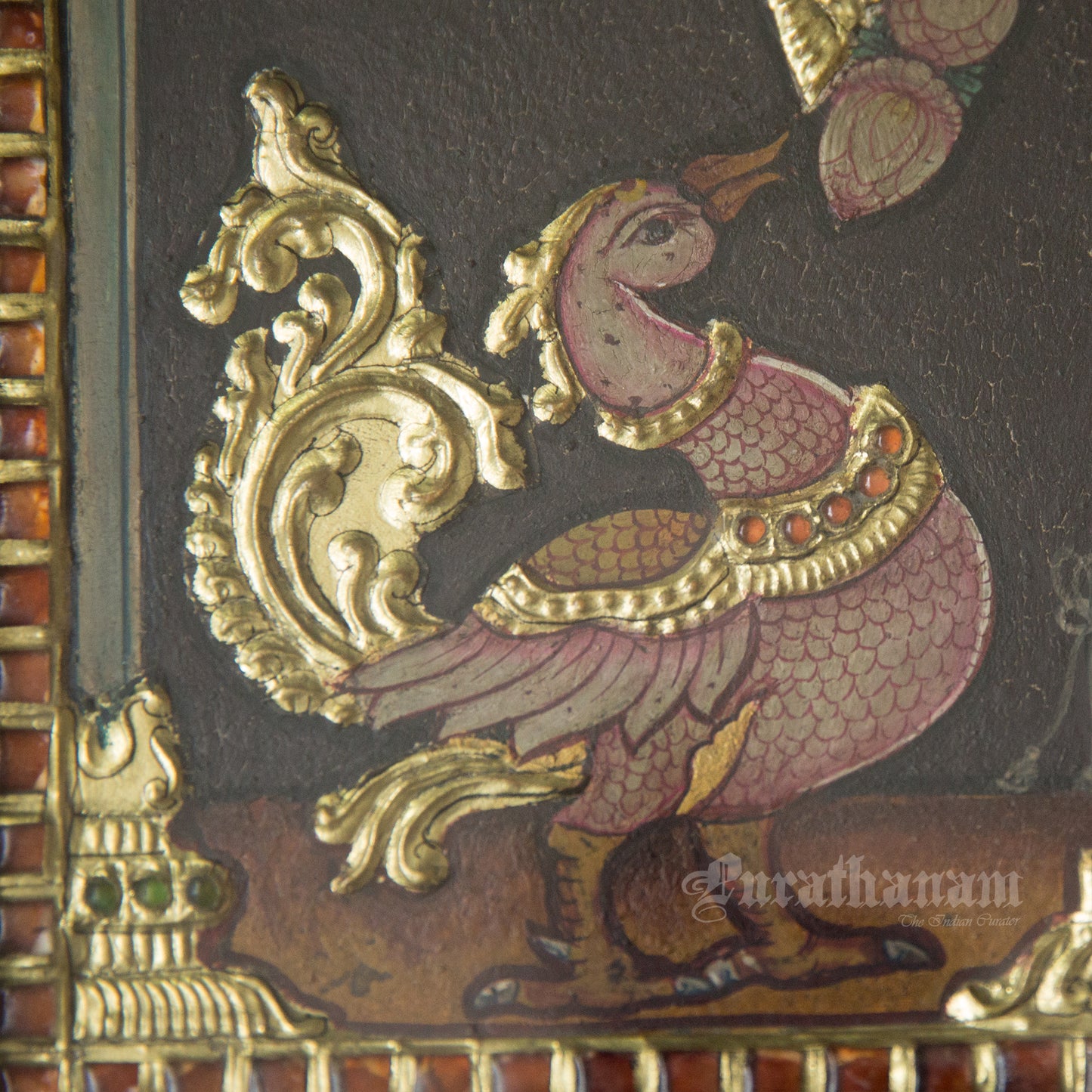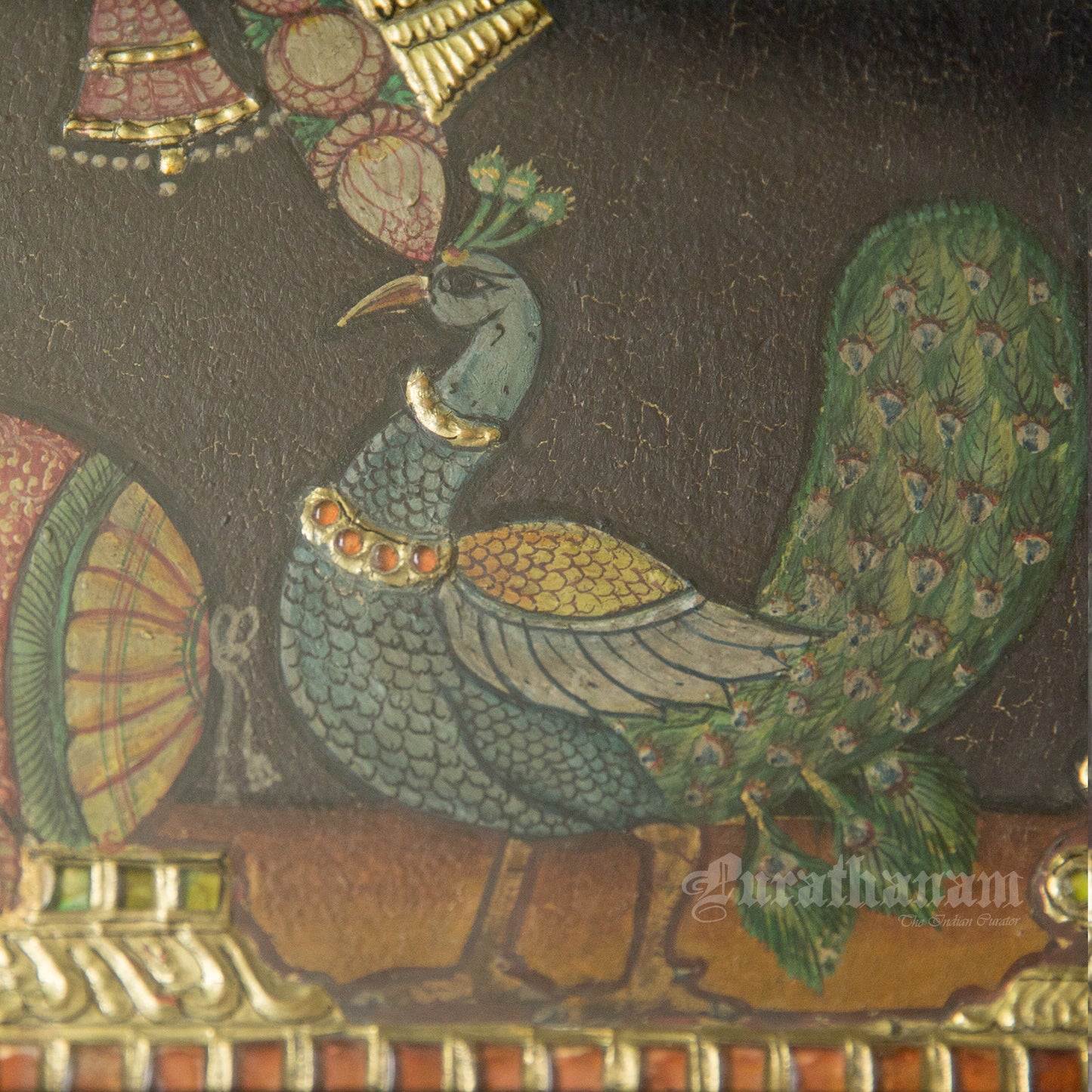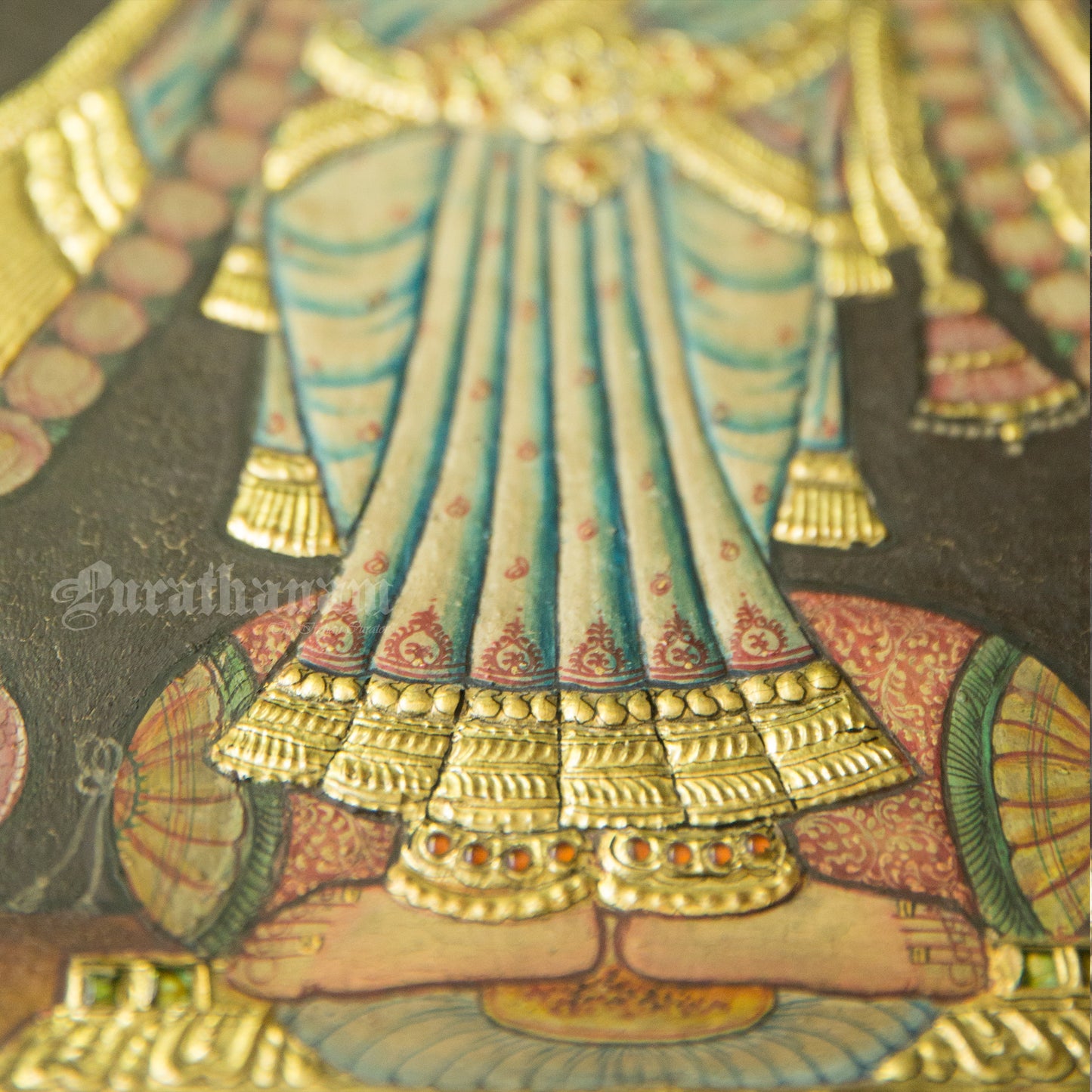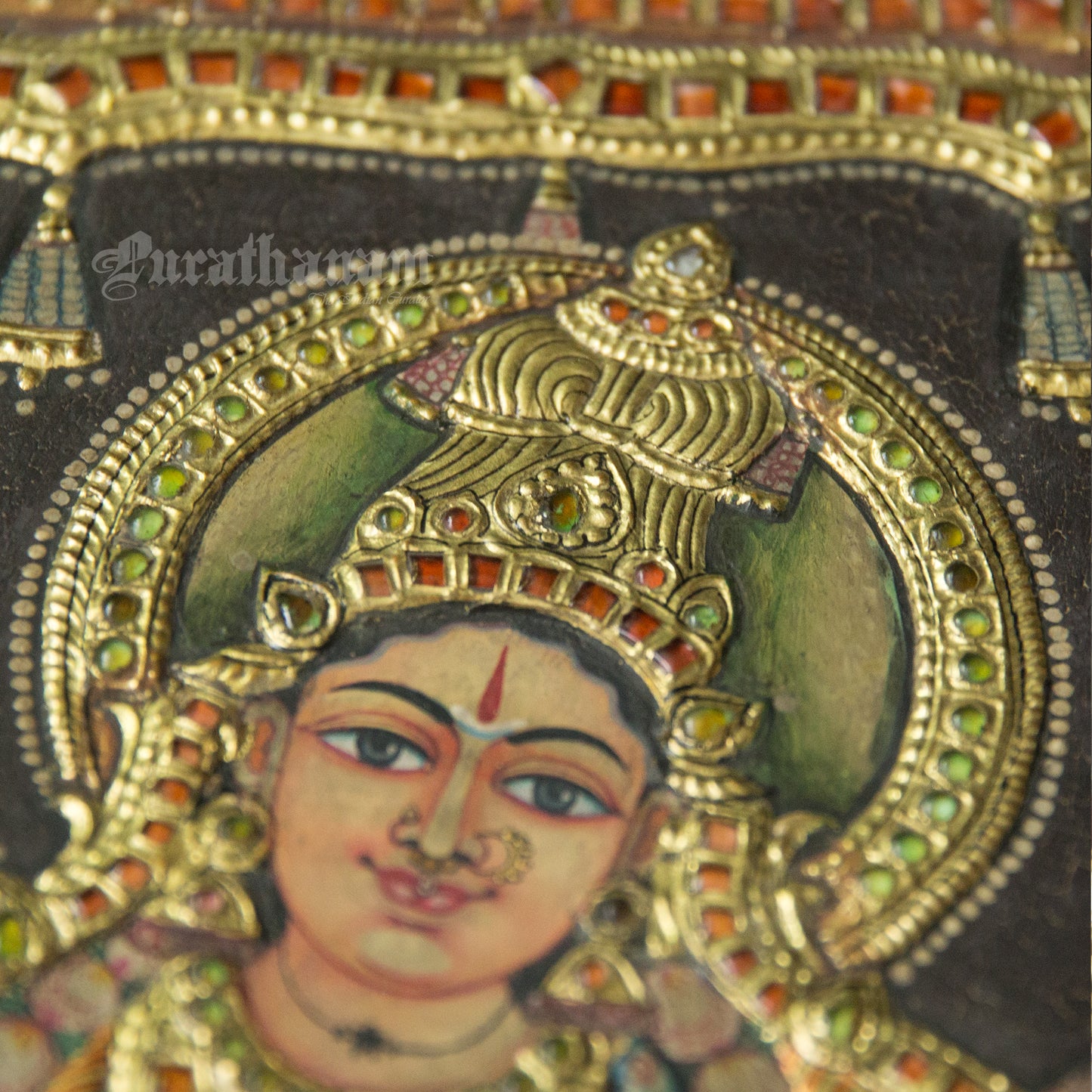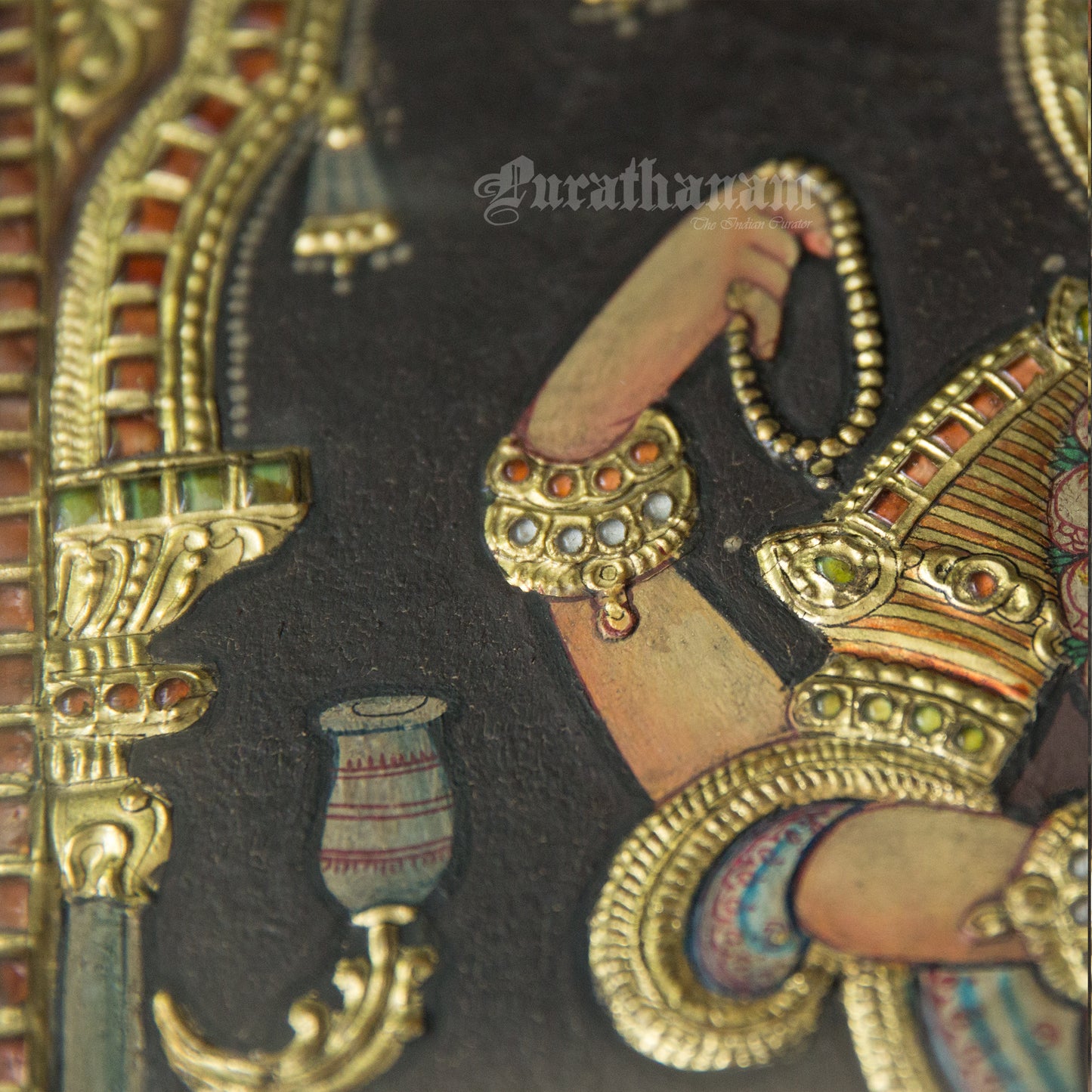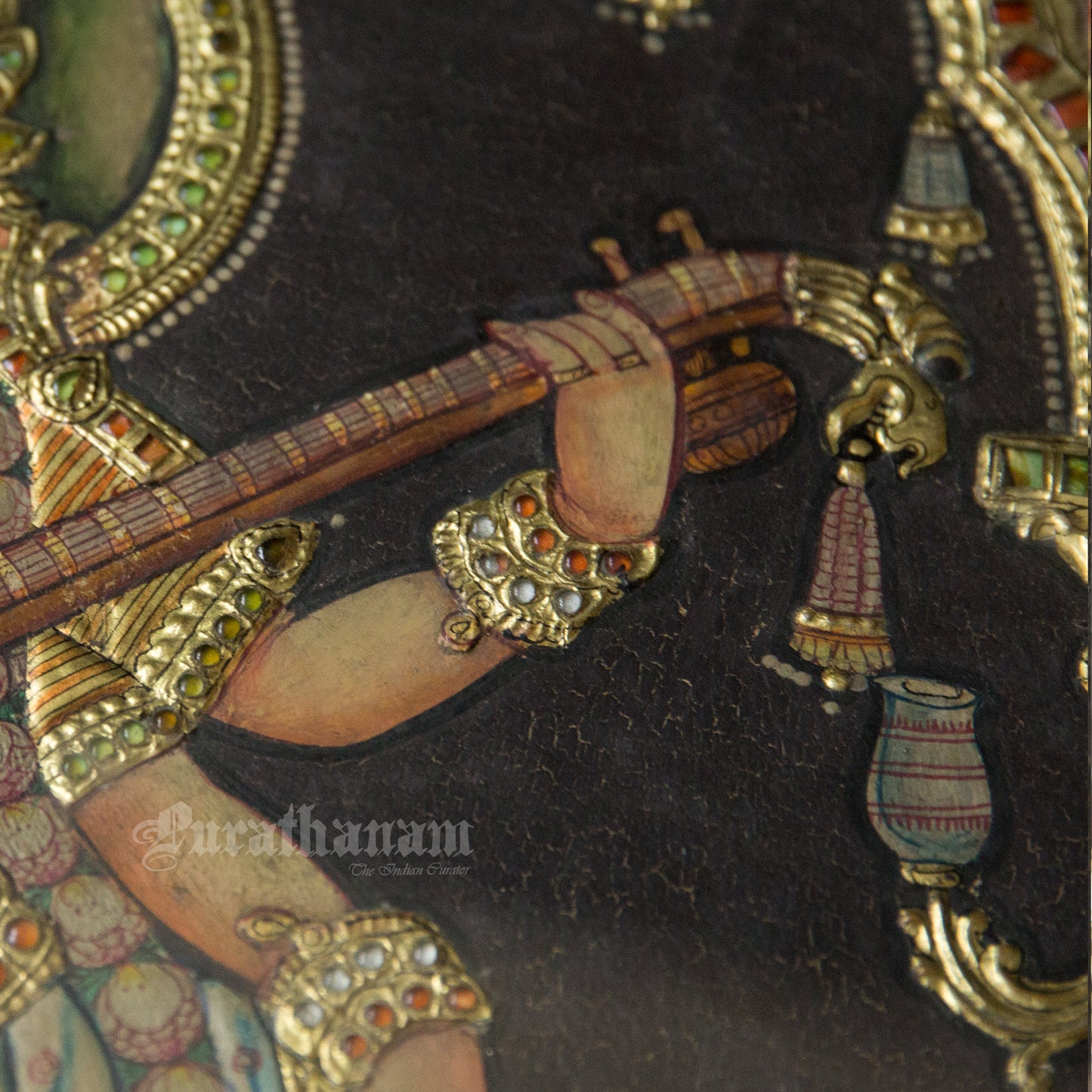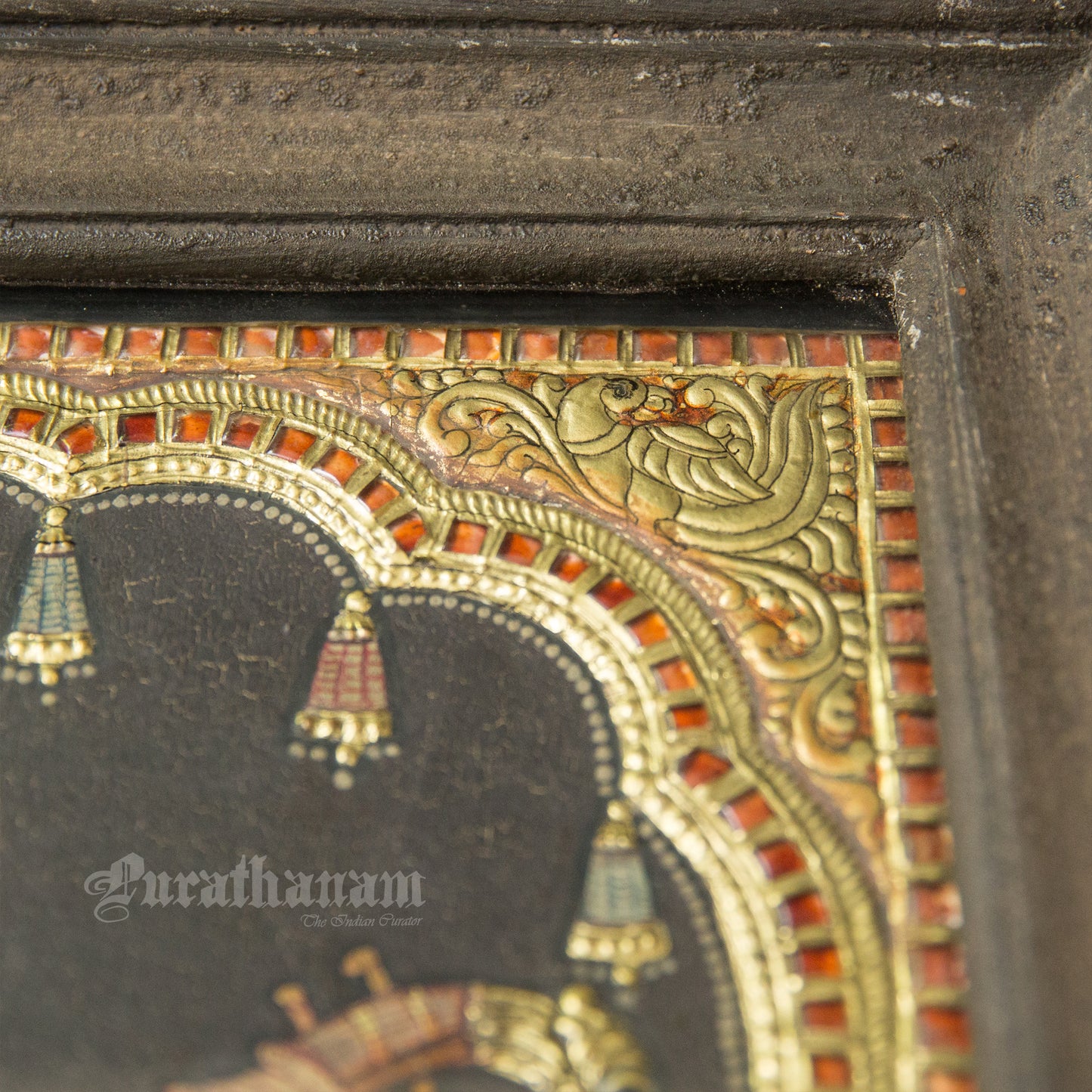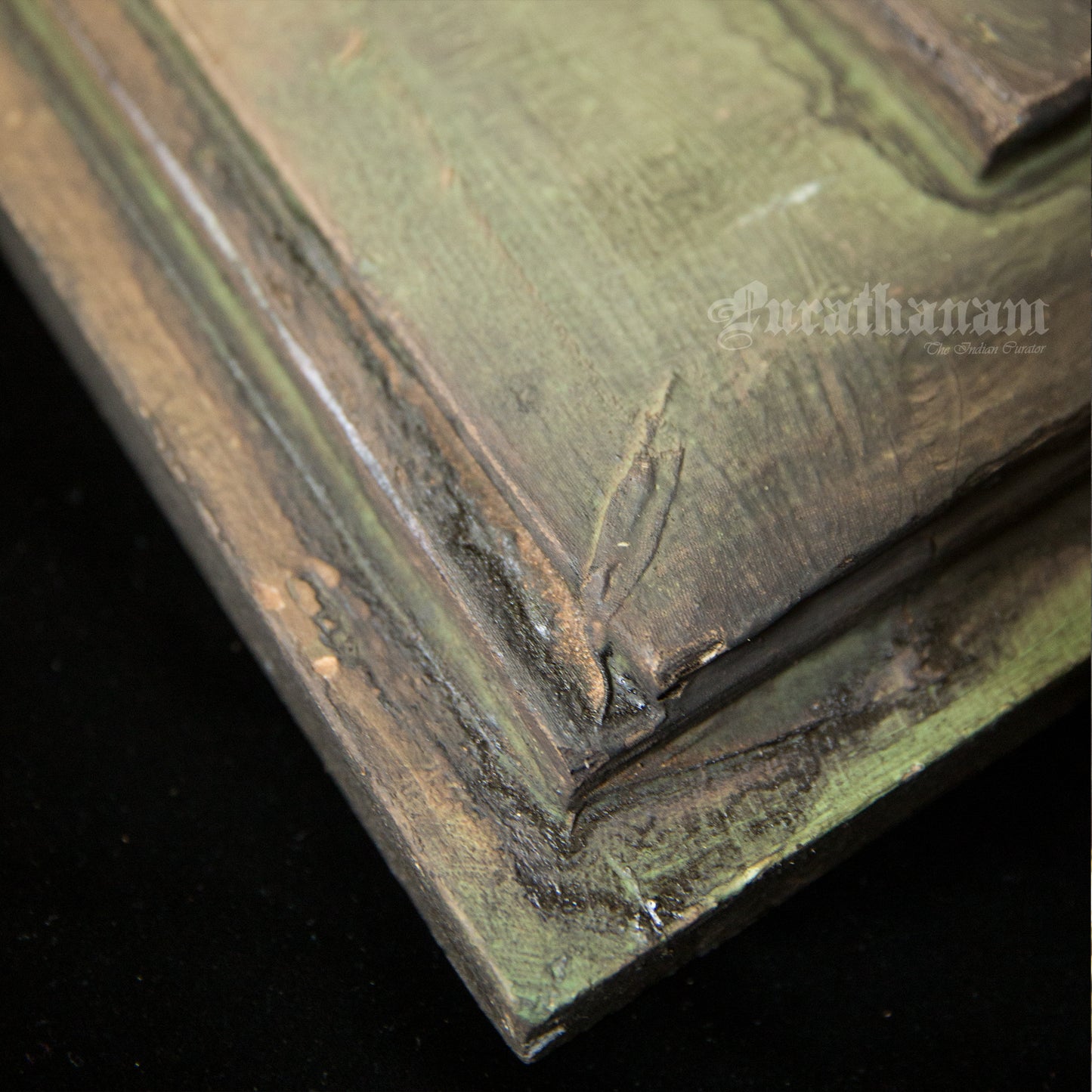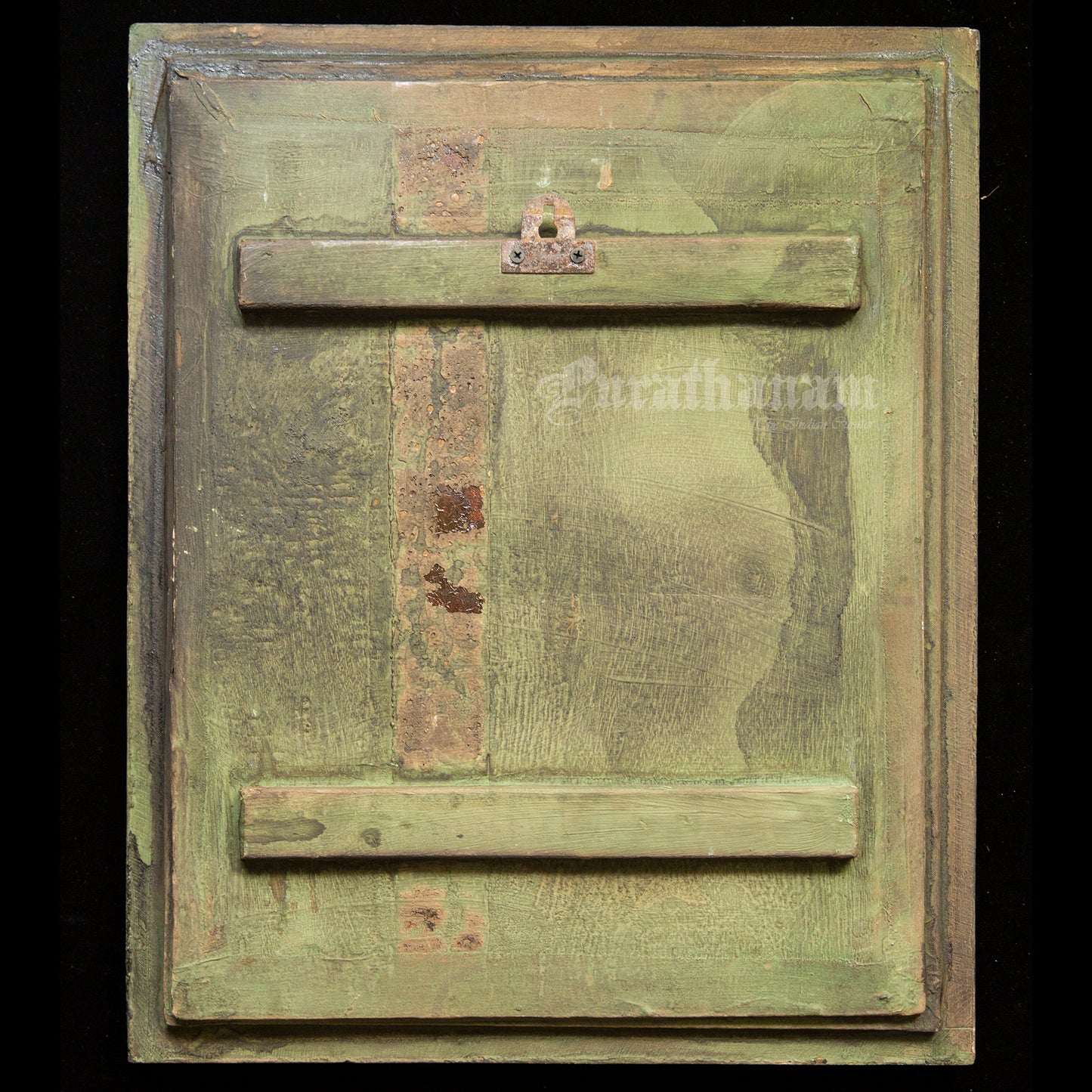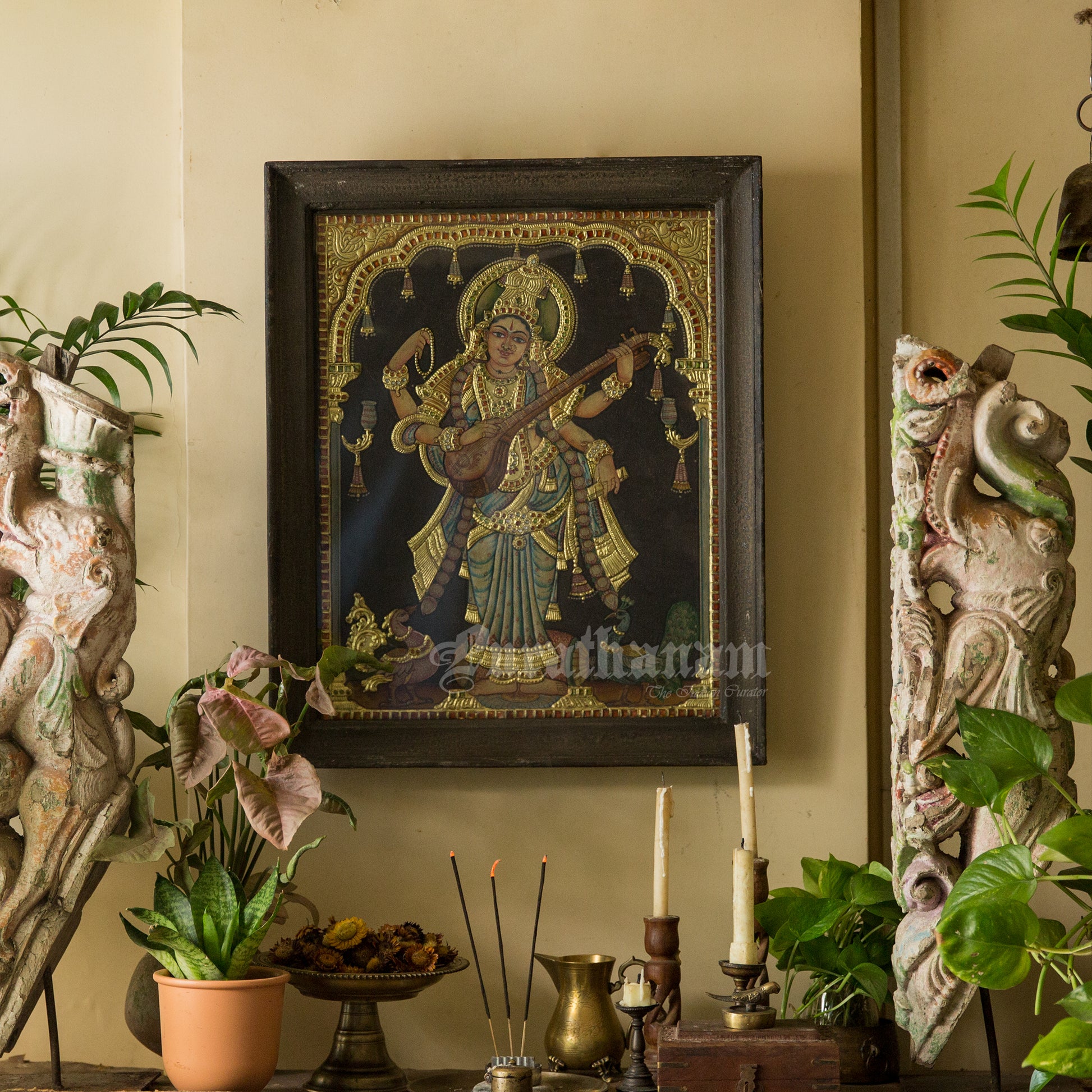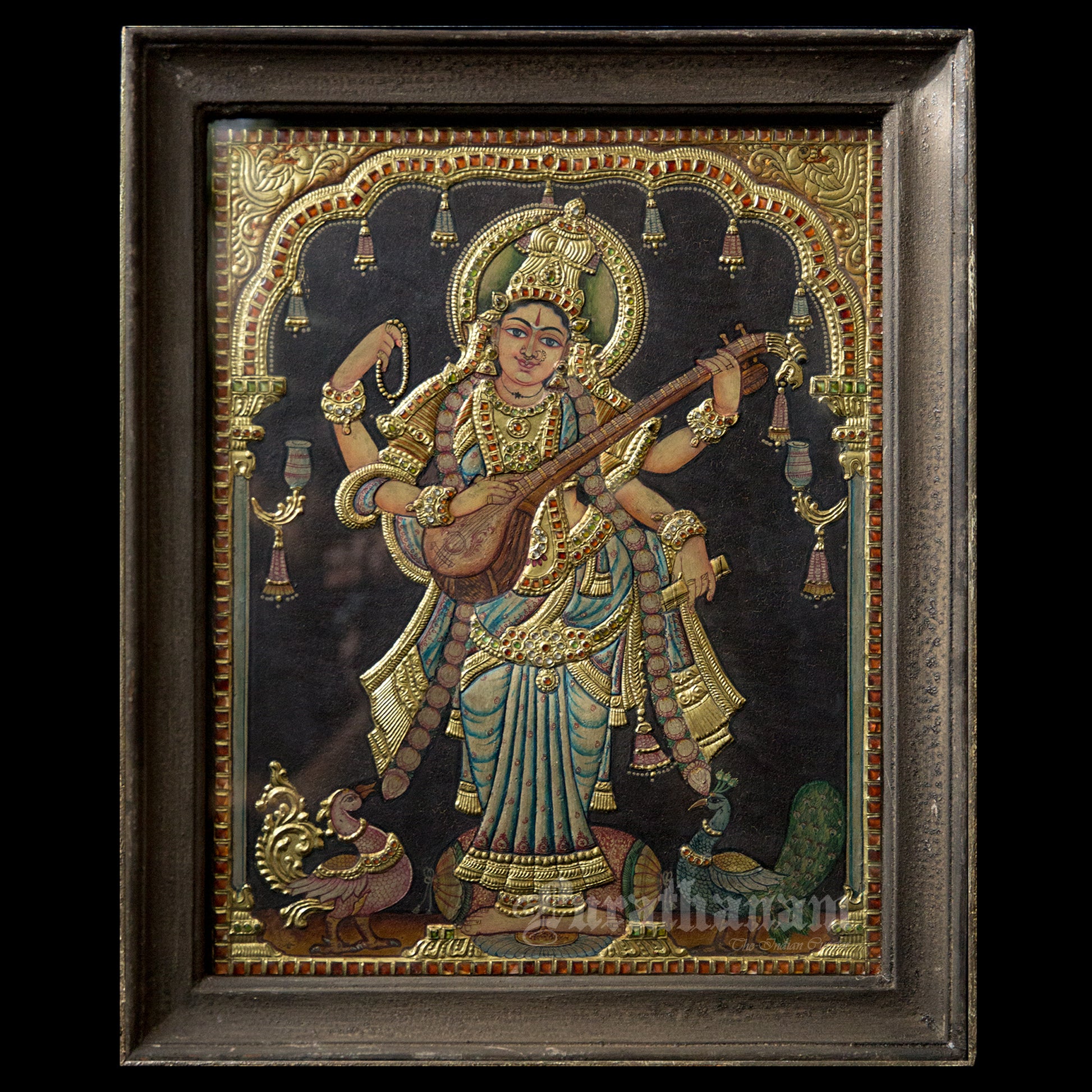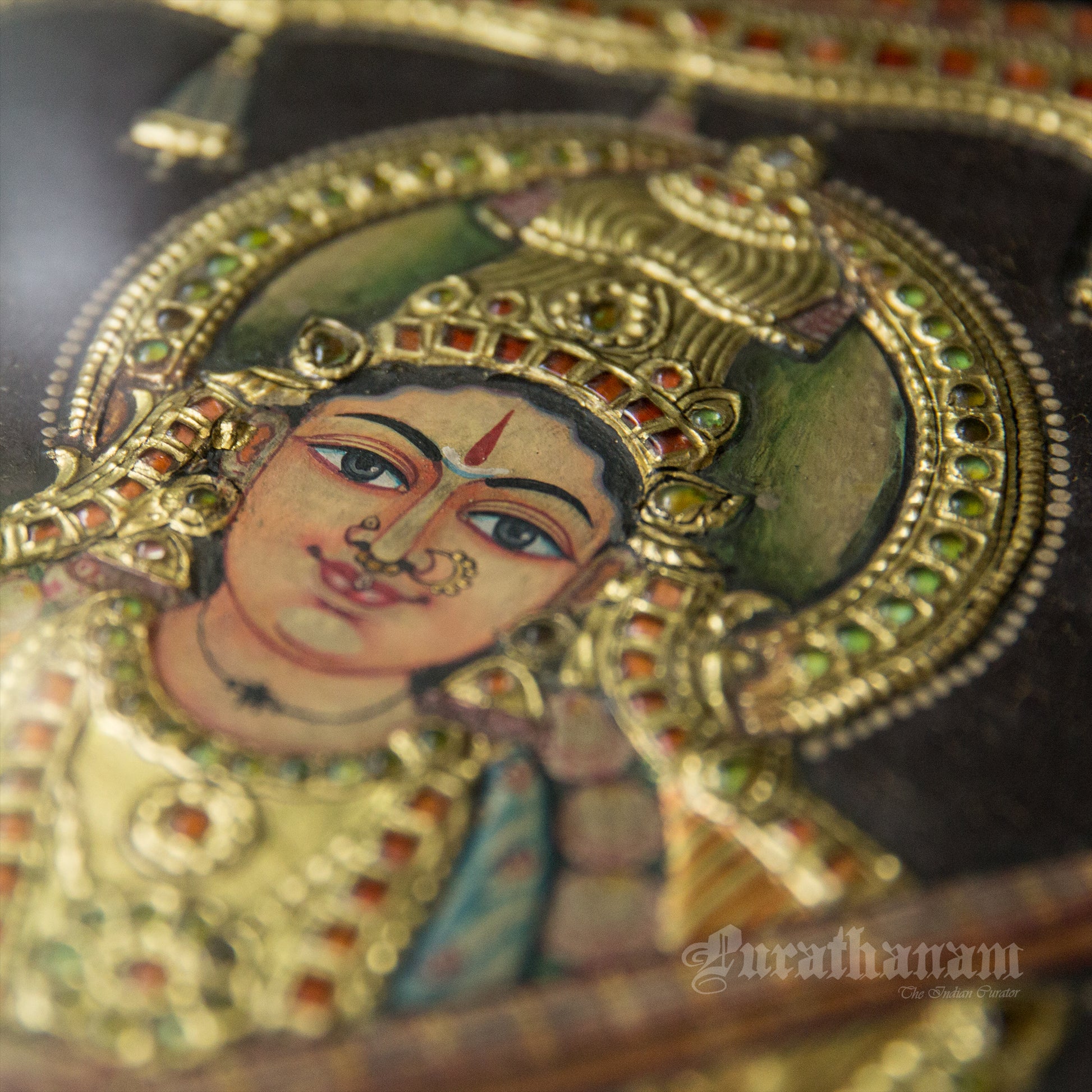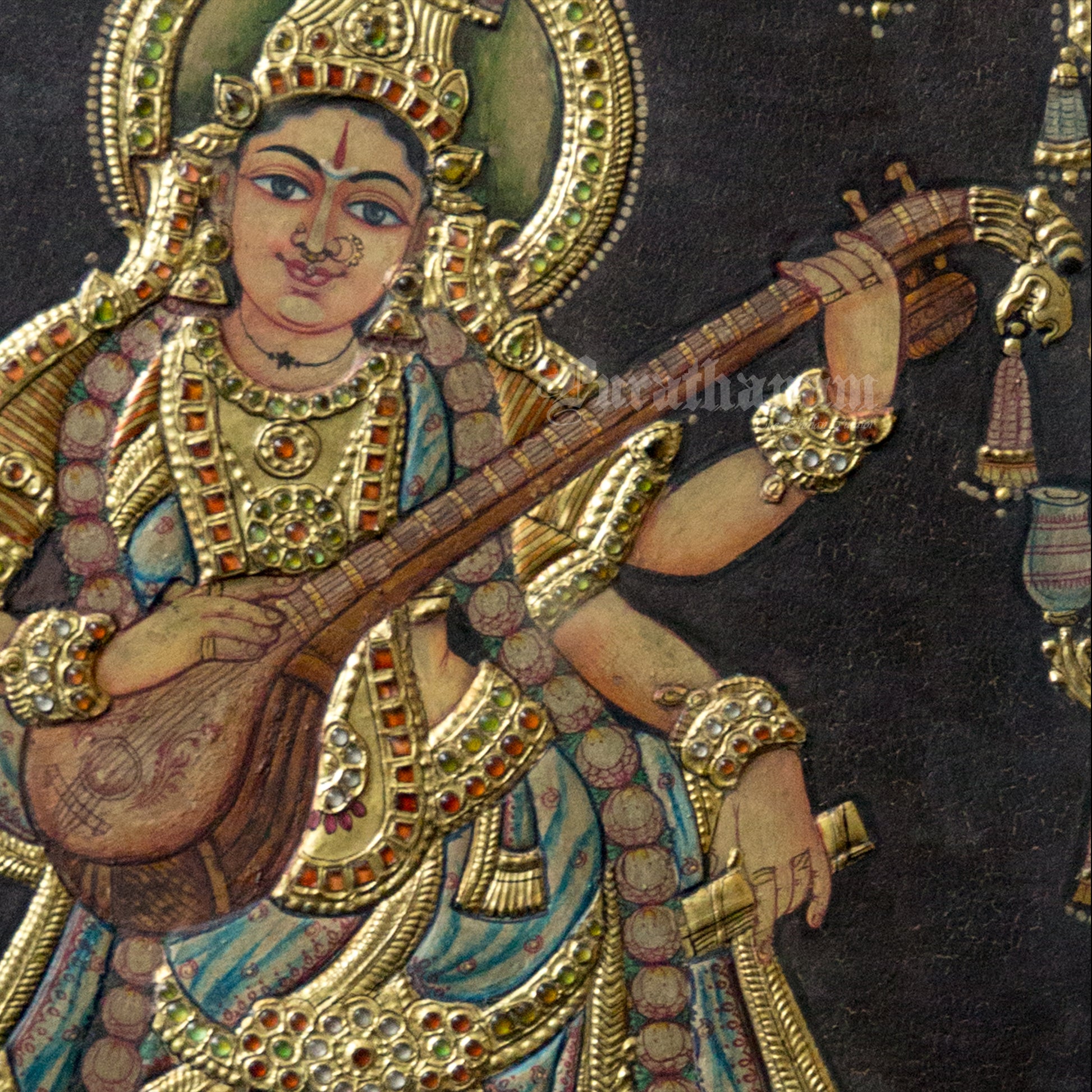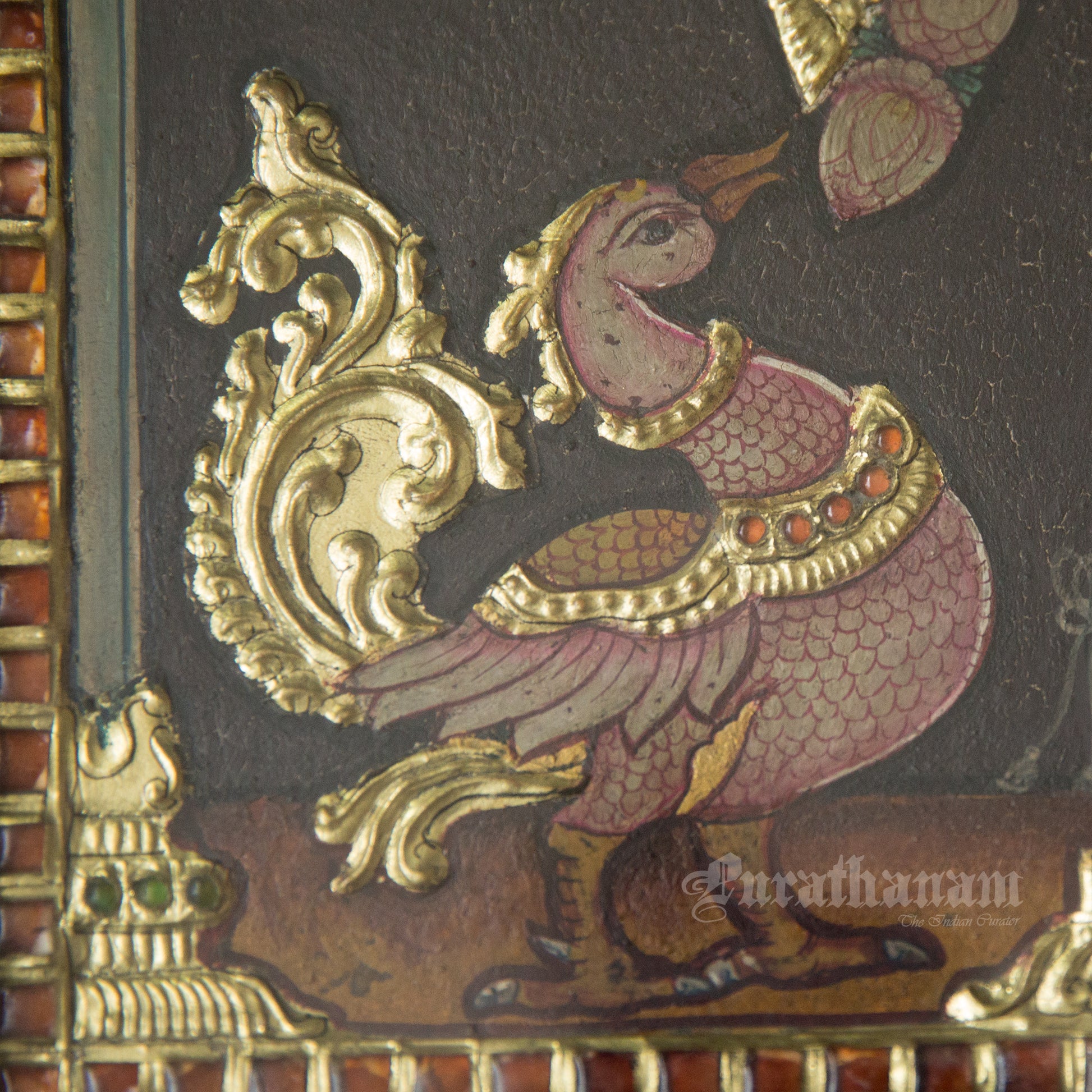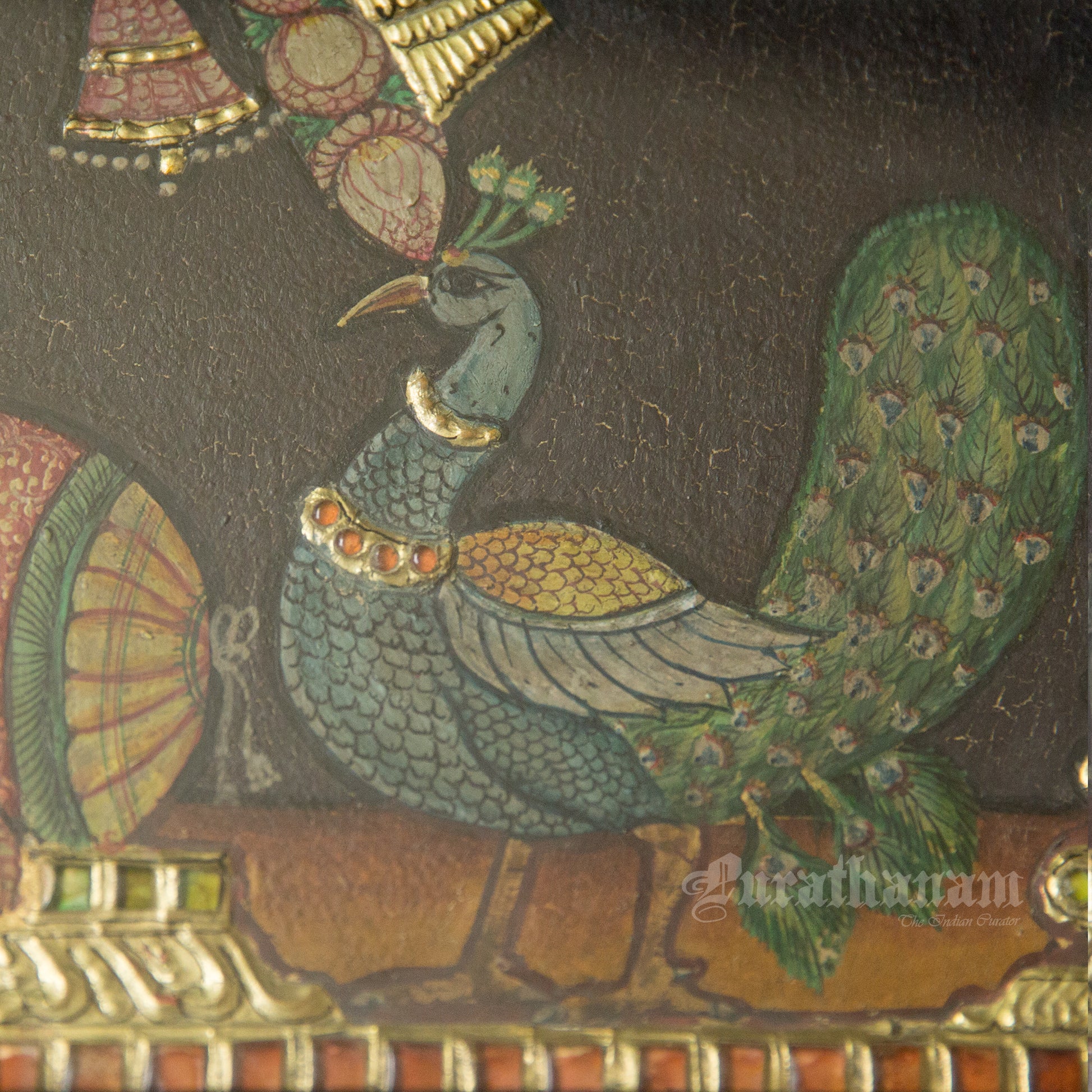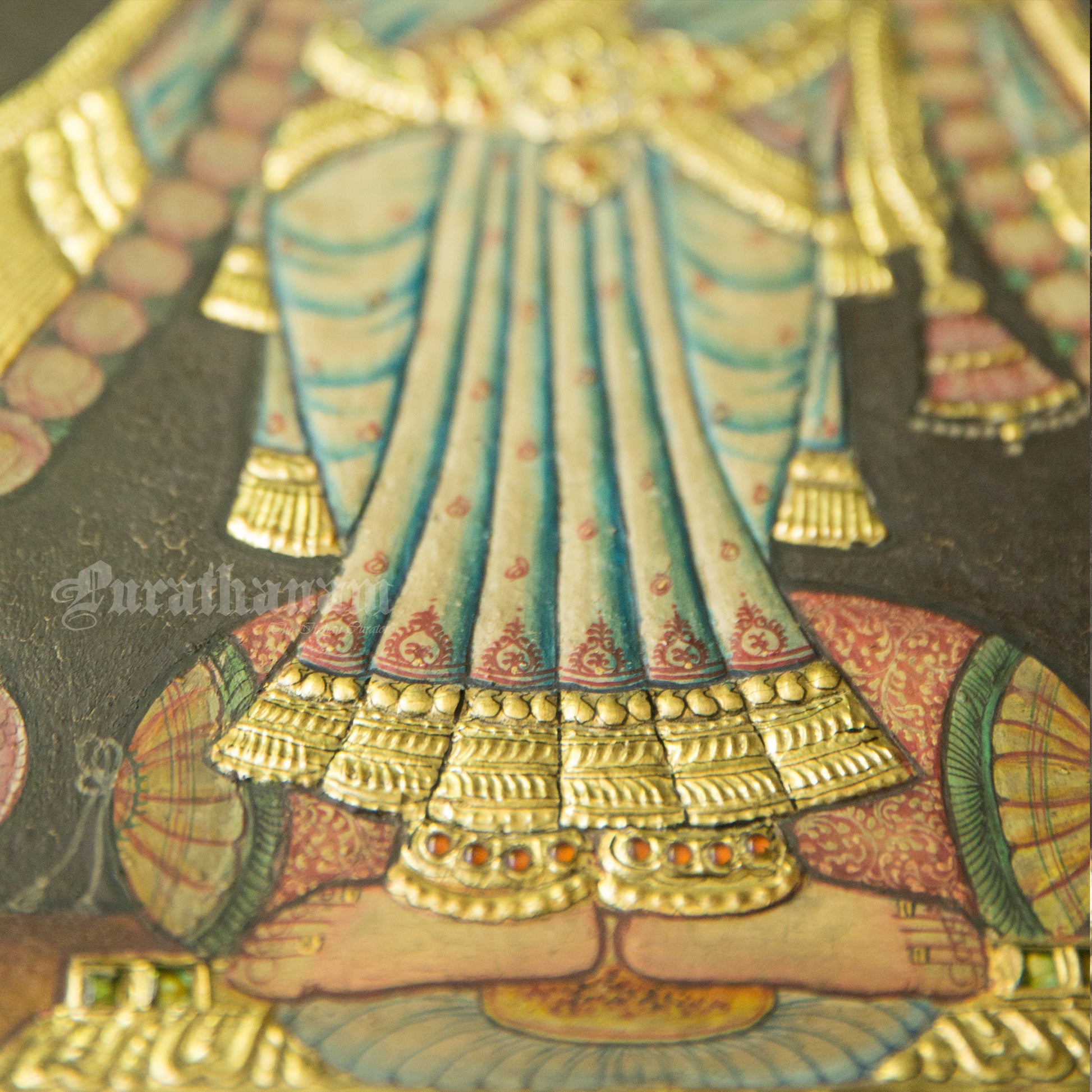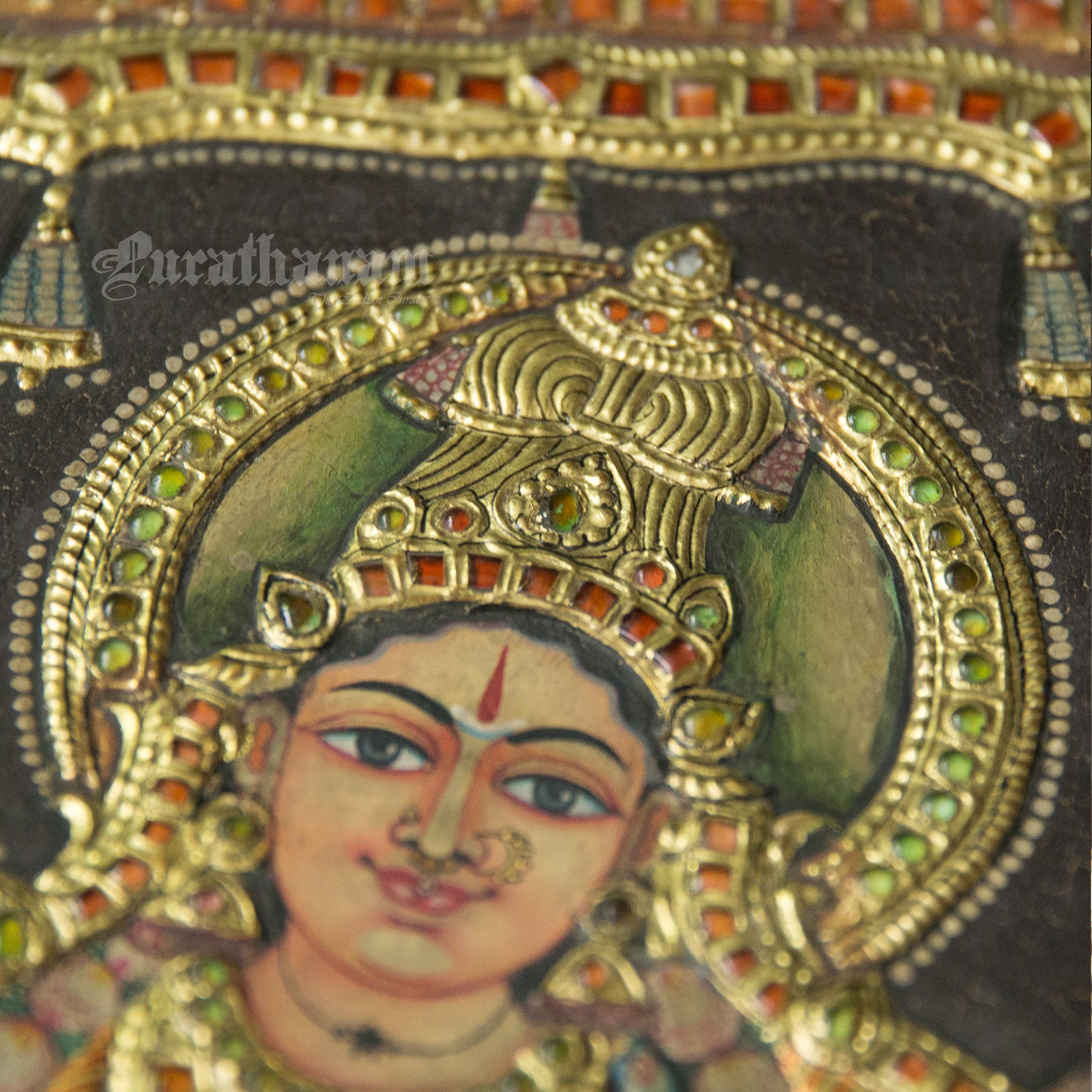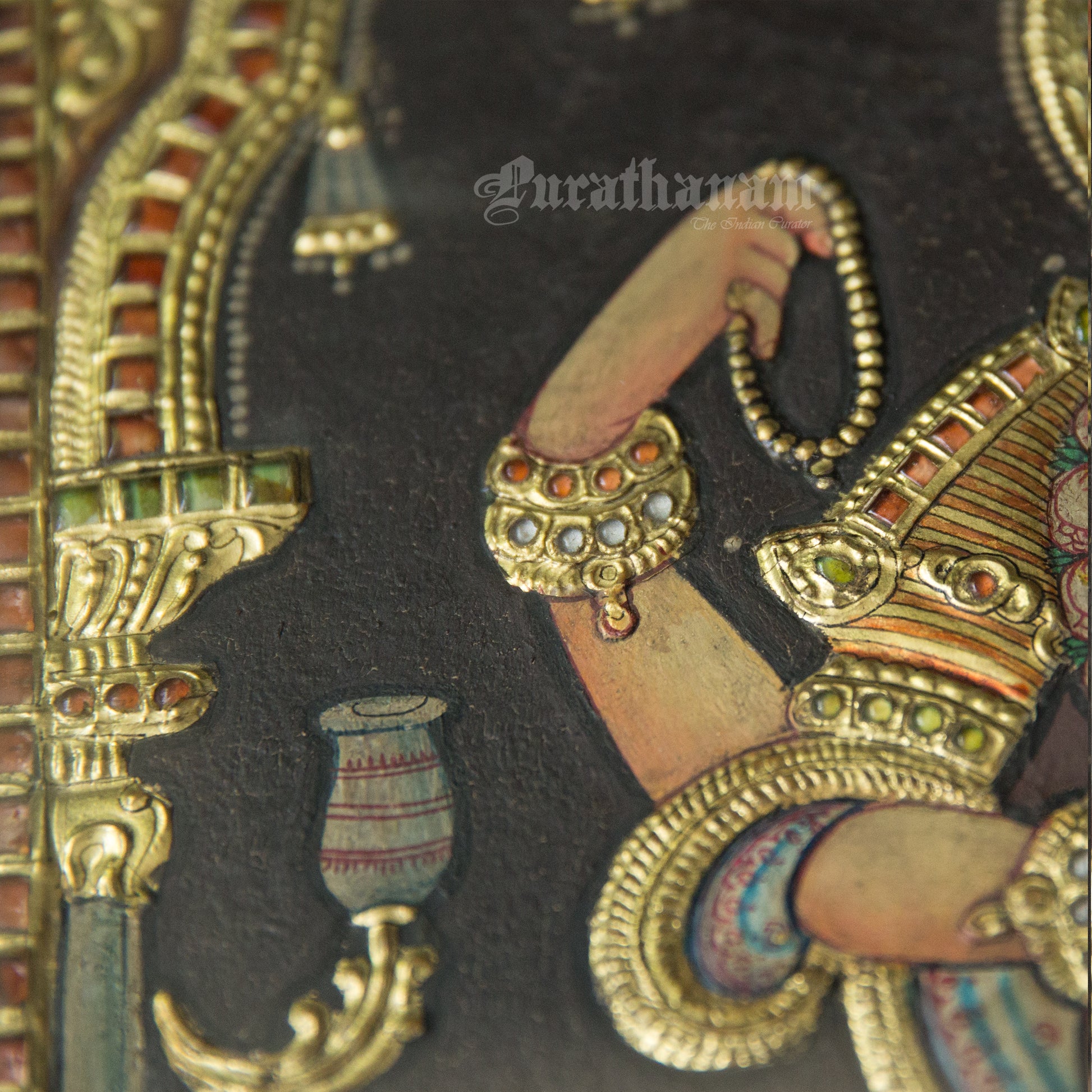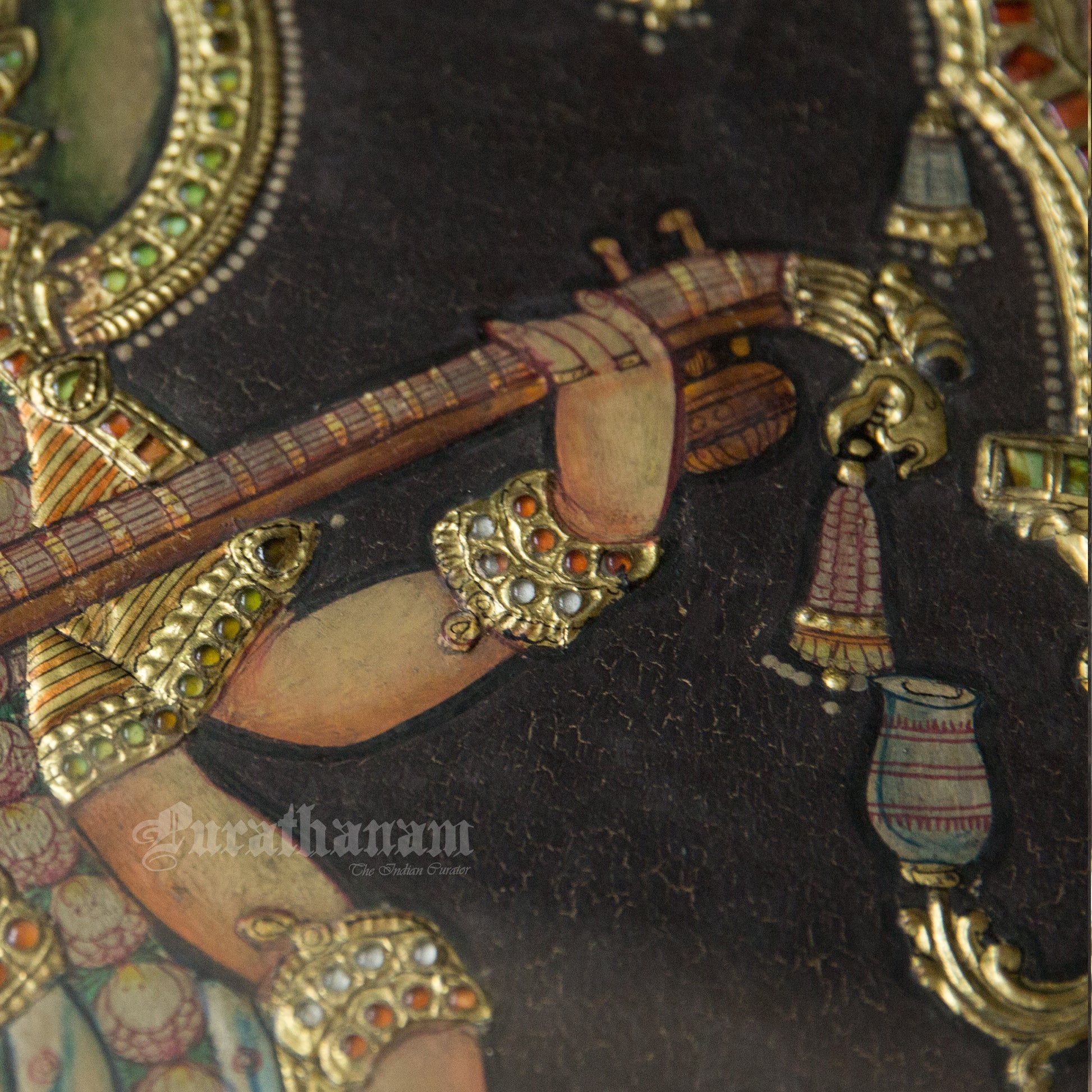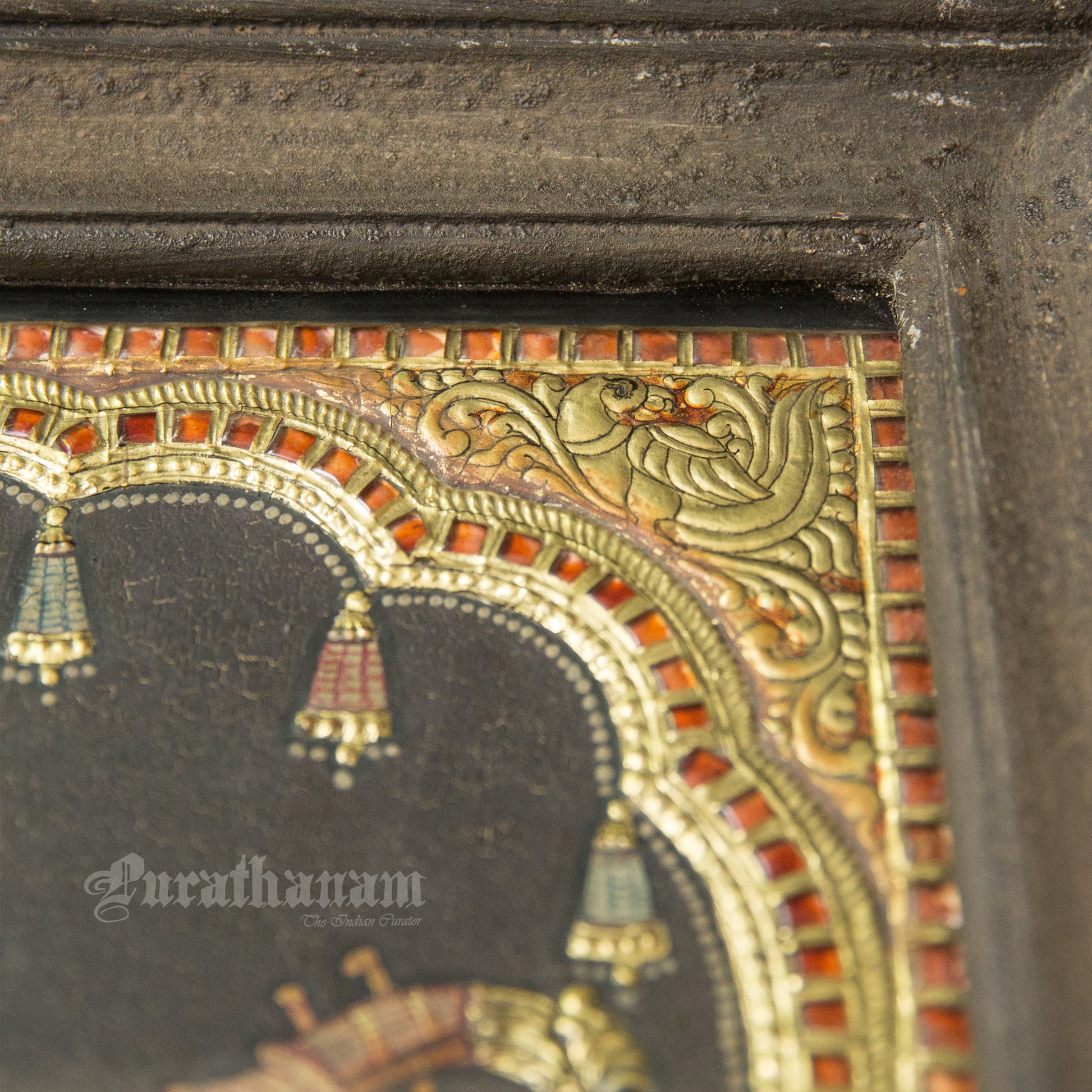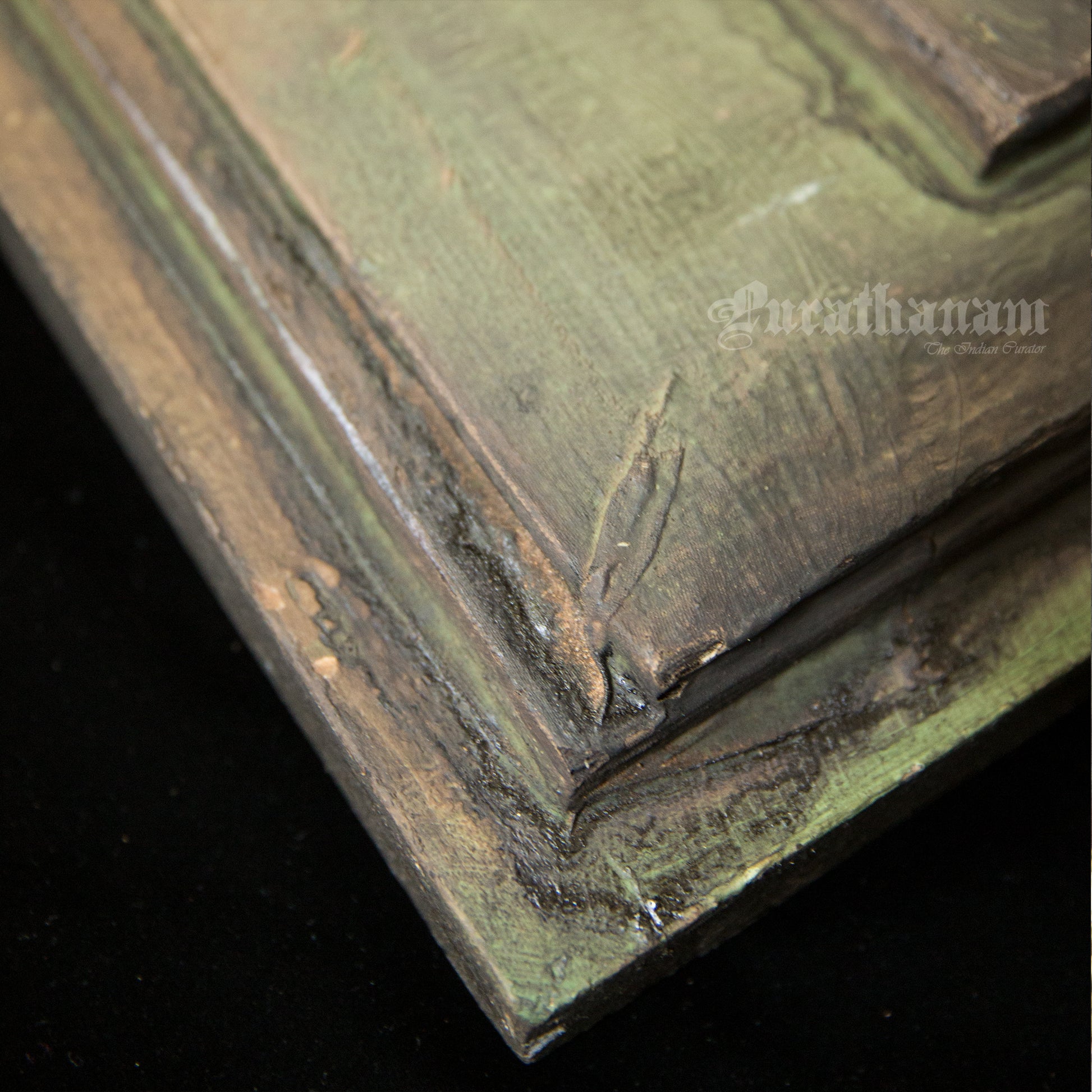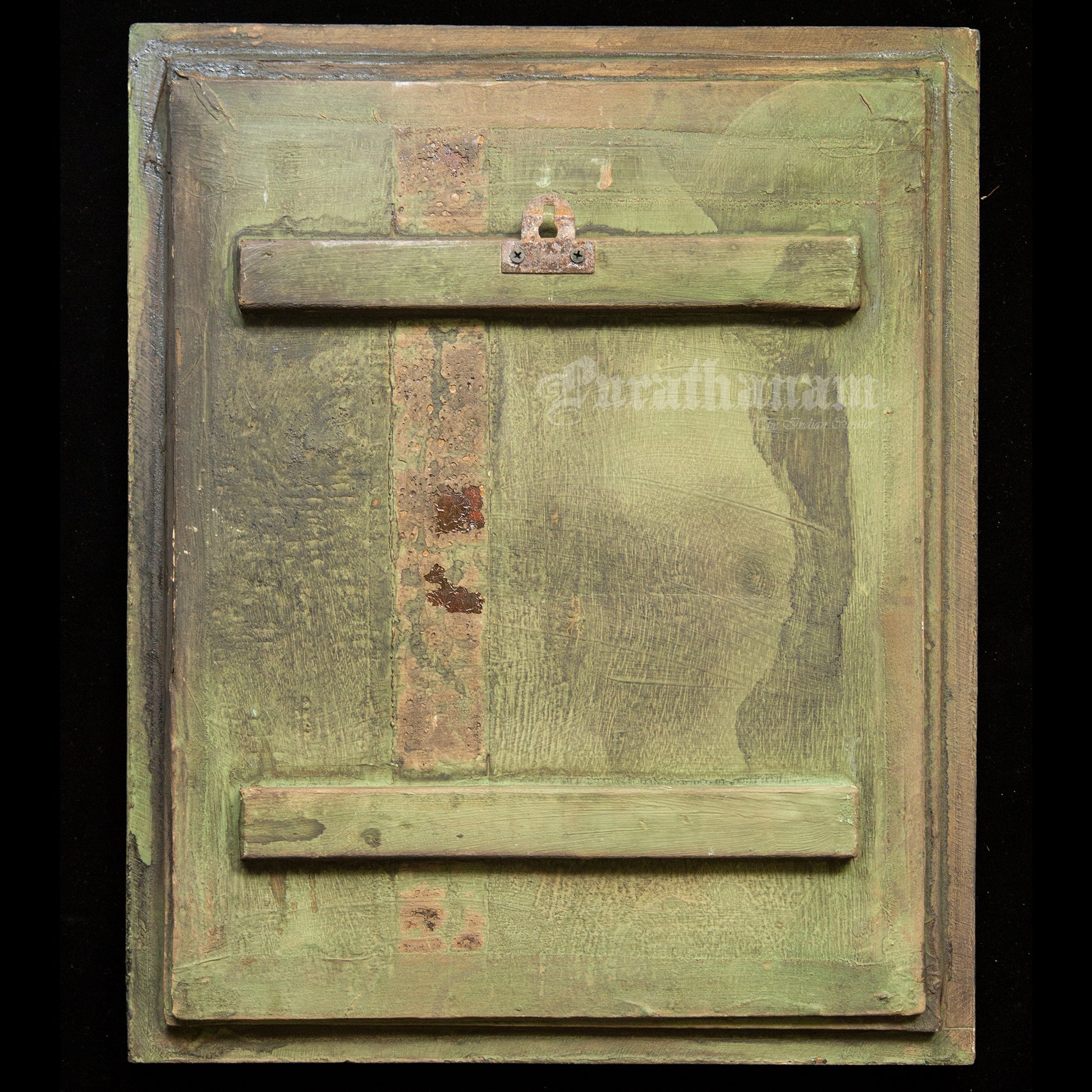Purathanamstore
Saraswati
Saraswati
Couldn't load pickup availability
Description:
Here is a Tanjore painting of beautiful Saraswati who has has many names like Saraswati, Sharada, Veenapani, Bagdevi and Bani, Chaduvula in Telugu, Sharadamba in Kannada and She is popularly known as Kalaimagal in Tamizh.
She is usually depicted as young woman in white saree, she has a white swan called Hamsa to her left which is her carrier and peacock to her right. It is believed that the swan has a super power that it can drink only milk leaving the water aside. Therefore, the swan symbolises the capacity to discriminate between right and wrong. She always has a musical instrument with her called Veena. It is believed that she brought music to humankind. Saraswati is the Goddess of knowledge and wisdom, always associated with education, writing, speech, and other related disciplines.
History of Tanjore Painting
Tanjore Painting (or Tanjavur Painting), as the name suggests, comes from the city of Tanjavur in South India. This style of painting was introduced during the reign of King Raghunatha Nayakkar in the 16th century CE. Until the 13th century, Tanjore was ruled by the Chozhas (Cholas), after which it was captured by the Nayakars of the Vijayanagara Empire. The Tamil region was then divided into three Nayakships — Madurai, Tanjore, and Gingee.
King Raghunatha Nayakkar, who ruled Tanjore from 1600 to 1634 CE, is considered the founder of Tanjore Painting. He is remembered as the greatest of the Thanjavur Nayak kings. His reign saw great achievements in arts, literature, and Carnatic music, similar to the golden period under Mahendravarman Pallava and Narasimhavarman Pallava (600–668 CE) in Kanchipuram during the Pallava dynasty.
In the early days, idols of gods were mostly made from metals. But as the region became a battleground for powers like the Portuguese, English, and Mughals, metals became scarce due to their use in weapon-making. So, King Raghunatha invited artisans — the Nayakars and Rajus — from Tirupati, who were skilled in the Kalamkari art form. That’s how the art of Tanjore painting was adapted from Andhra.
Later, the Marathas captured Thanjavur and ruled from 1674 to 1799. Tanjore paintings continued to evolve through all these different periods of rule
Early Facts About Tanjore Paintings:
- No Gemstones Initially: There were no gemstones in Tanjore paintings during the Nayakkar period (Vijayanagar Dynasty). Artists used only real gold leaf. It was during the Maratha period that they started adding gems, emeralds, rubies, and other precious stones to enhance the beauty and grandeur of the paintings. Because of this, Tanjore paintings became very expensive and were meant only for rich and royal families back then.
- Nose Rings Came Later: The nose rings on deities seen in Tanjore paintings are relatively new. Tanjore painting artisans say the earliest paintings had no nose rings on deities, and this is one way to judge the age of a painting. Nose rings are not seen in Chola bronzes or in early Pandya stone idols. It’s understood that there were no nose rings on Devis until the Chozha period. Later, we can see the influence of the Mughal period in Tanjore paintings.
- Wooden Bases (Palagai Padam): The early Tanjore paintings were made on jackfruit wood, known for its ability to withstand all weather conditions.
- No Glass Protection: Back in the day, Tanjore paintings were framed using teak wood and did not have protective glass covers, they were displayed openly. Due to less pollution they were safe even without a glass cover.
- Natural Colors: The color medium used in early Tanjavur paintings was made from organic vegetable dyes, resulting in lighter shades compared to modern-day Tanjore paintings. These natural colors were not affected by light exposure at the time, as the paintings were mostly kept indoors and lit by dim traditional lamps. However, with the invention of electricity and the use of brighter lighting, it became harder for these colors to survive over time.
- Unsigned Artworks: Tanjore paintings were never signed by the artists. The reason often shared by the artisans is that the focus is always on the deity, not the creator. These paintings were seen as offerings or acts of devotion, dedicated completely to the gods. Since Tanjore paintings were mostly meant for temples or pooja rooms, signing them was not considered important, the divine presence in the art mattered more than personal credit.
-------------------------------------------------------------------------------------
Product Details:
SKU ID:
PTP013
Product Name: Saraswati
Artist: Unknown
Dimensions:
18.5” x 23” x 2.75”
Weight: 4.9 Kgs
P. S. The products we sell are vintage and antiques and hence may have visible scratches and chip offs. We cherish them as they are reminders of the story they have been part of and hence we proudly display them in the product pictures too.
-----------------------------------------------------------------------------------
Shipping:
We ship all over India and overseas. For shipments out of India, any custom duty levied will be borne by the customer.
-----------------------------------------------------------------------------------
Return Policy:
No returns or Exchanges
Please do check the dimensions before you buy.
Share
